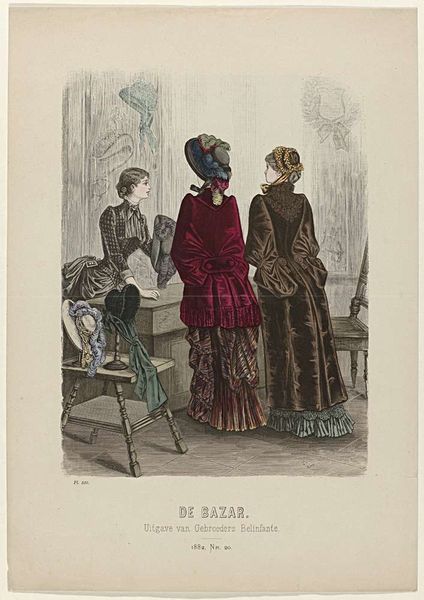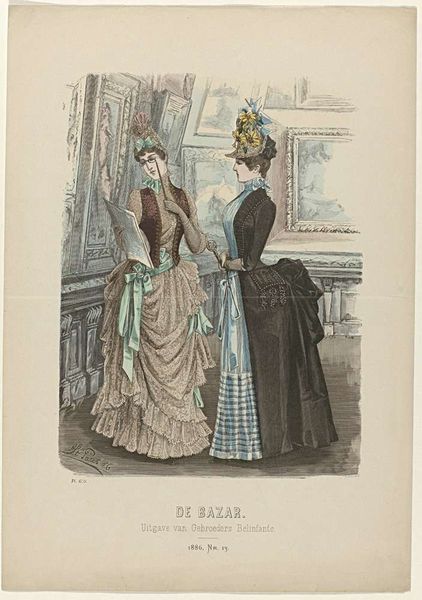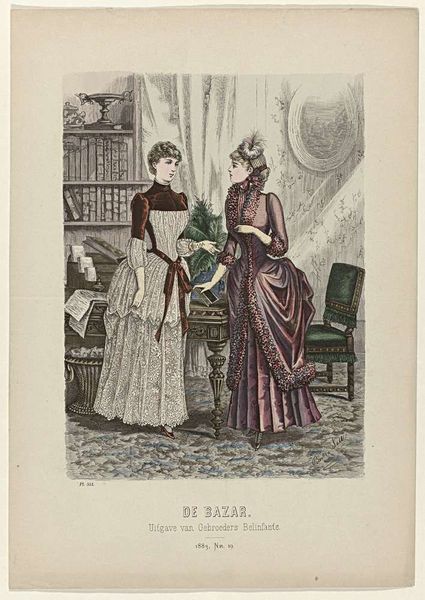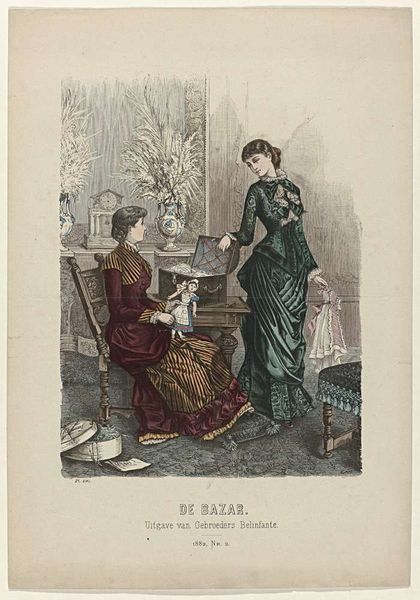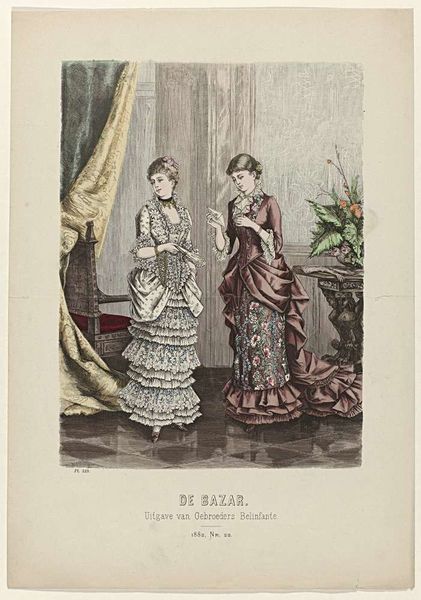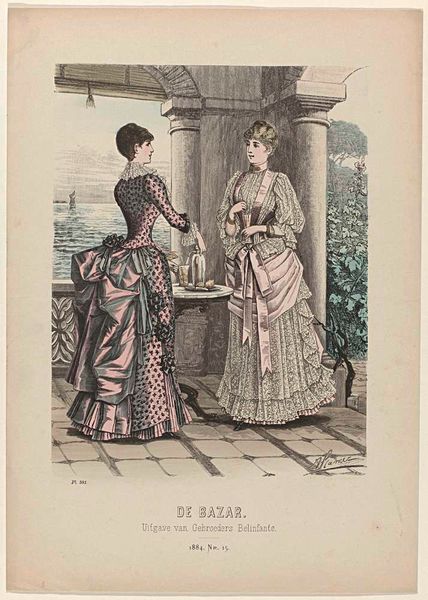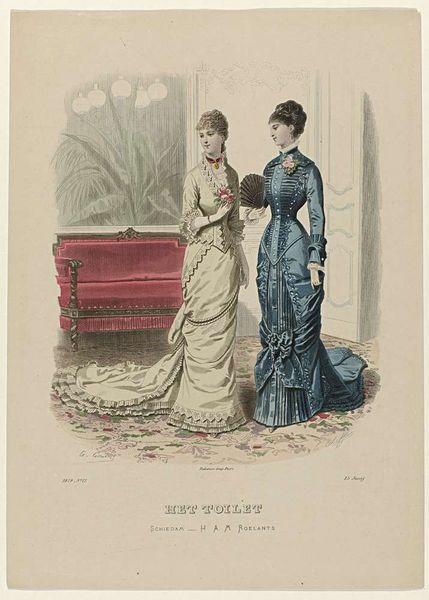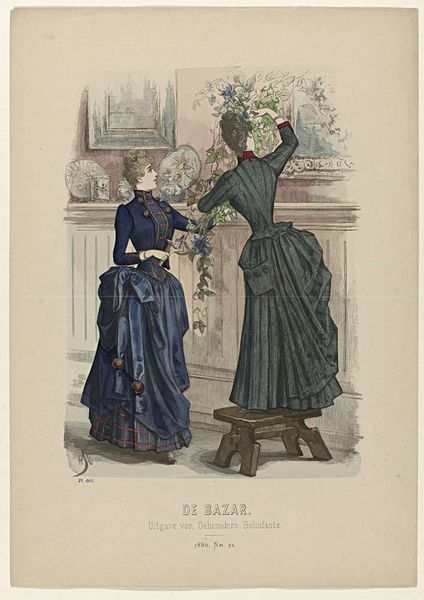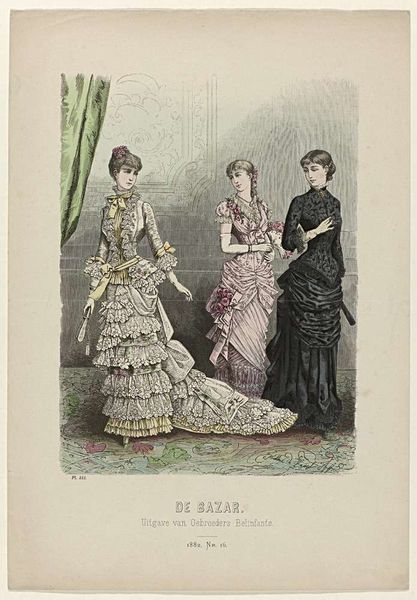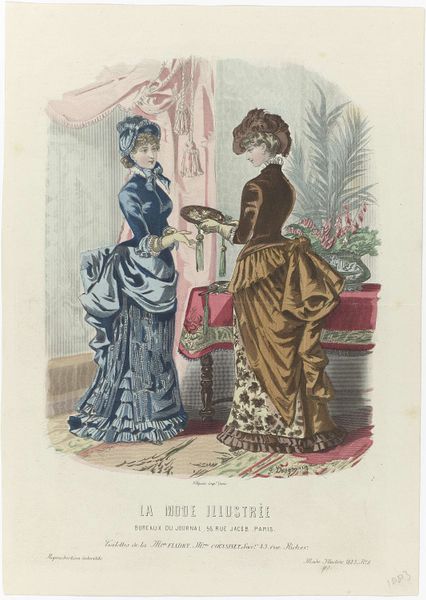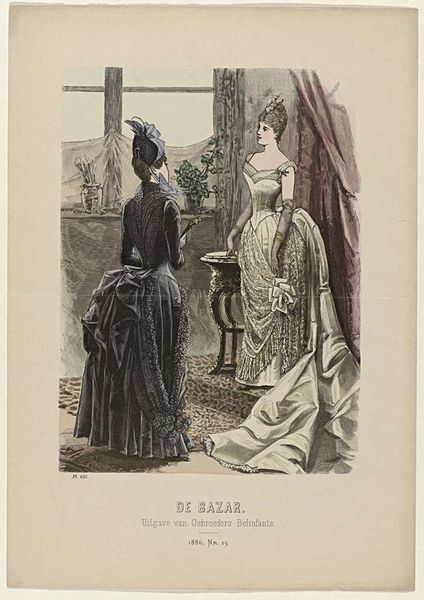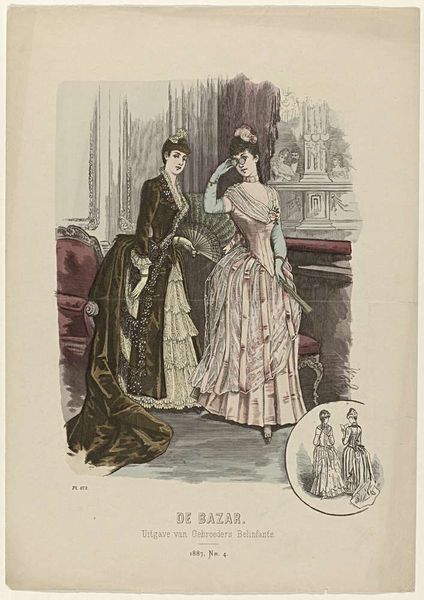
print, engraving
#
portrait
#
16_19th-century
# print
#
watercolour illustration
#
genre-painting
#
engraving
#
pencil art
#
watercolor
Dimensions: height 382 mm, width 270 mm
Copyright: Rijks Museum: Open Domain
Curator: Well, Editor, we’re looking at “De Bazar, 1882, Nr. 24, Pl. 522,” a print from 1882 created by an anonymous artist. It showcases a genre-painting style. Any initial thoughts? Editor: Oh, those dresses! All I see are elaborate bows, layers, and intense detailing. It's like stepping back into a world preoccupied with opulence, almost as a barrier for survival. But a fabulous barrier, naturally. Curator: The focus on such distinct fashion can definitely symbolize status, Editor. Each detail from the silhouette to the fabrics carries symbolic weight, not just about wealth, but also societal expectations. Fashion prints like these acted almost like coded messages of the time. Editor: Coded, indeed! I bet understanding these symbols opened doors. I mean, imagine knowing the exact right cut or colour -instant access to conversations and social circles, right? It's fashion as a secret language! But, look, it almost looks staged – are these ladies genuinely interacting, or simply posing with an undertone of ennui? Curator: Perhaps a bit of both. In terms of symbols, the backdrop gives us clues as well, the domesticity of the scene —fireplace, decorations— highlights the limited sphere within which women of this class were expected to operate. It’s quite poignant. Editor: Ah, so those fancy bows and frills? Like, gilded cages, right? That interior looks like a museum in itself, all muted shades. It actually does add depth, beyond just showing a pretty room! Do you know anything of the publication? Curator: "De Bazar" was, essentially, an early fashion magazine. It was a popular source for women seeking to emulate the styles of the elite, allowing women of middling income the aspirational sense of style. The image is an engraving and watercolour – making this an example of a form of democratization in fashion through the accessibility of print. Editor: That changes my perspective a little! It gives such insight into longing, aspiration. Seeing them presented as 'available' through a magazine - clever and maybe just a touch mischievous! Suddenly, it's not just about what's expensive, but also what can be acquired, emulated. Makes the symbols feel alive. Curator: Precisely. It’s a study in consumerism, longings, and how symbols operate in society through both the elites and the masses. Editor: Thanks for walking me through this - my assumptions were ready to be skewered there. Curator: The fun thing about art, it's ready for interpretation every step of the way.
Comments
No comments
Be the first to comment and join the conversation on the ultimate creative platform.
